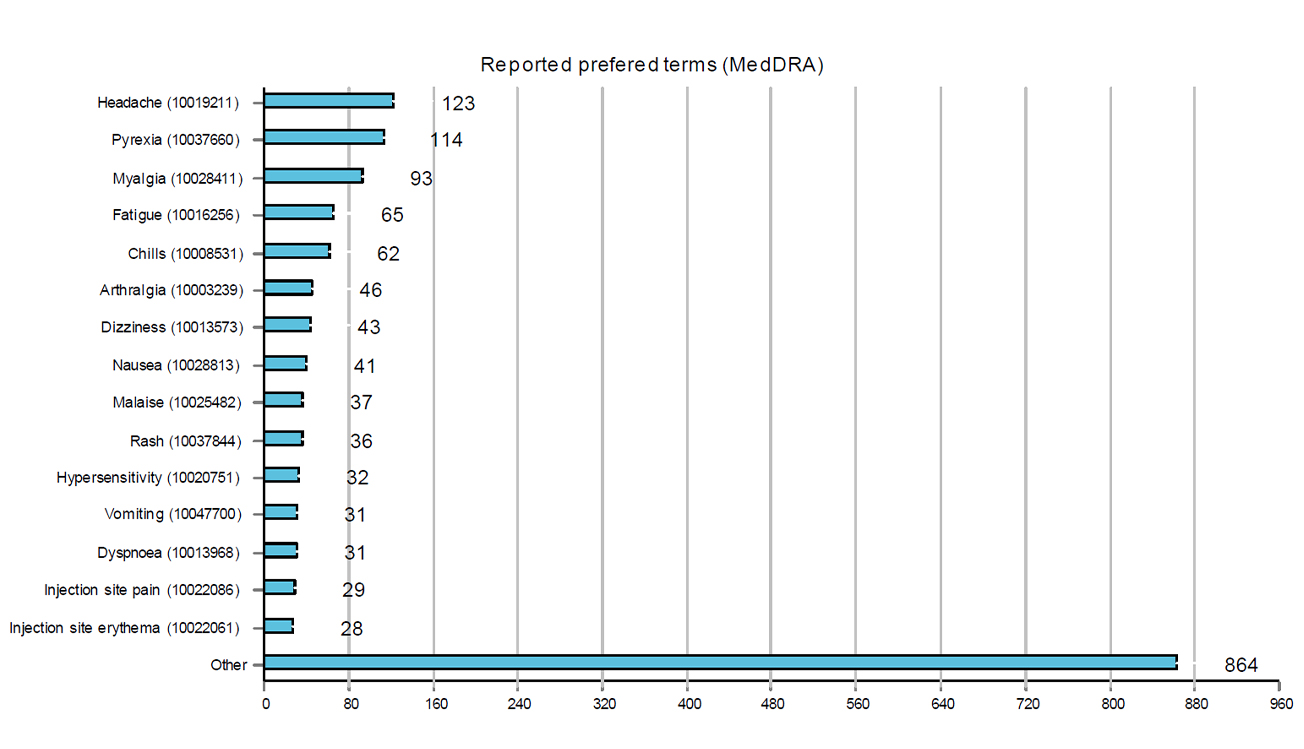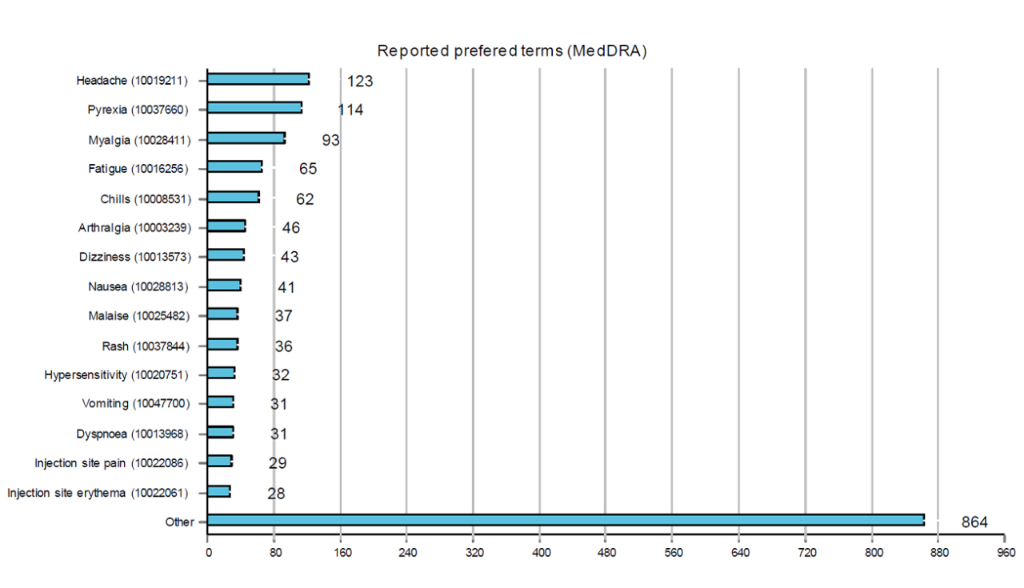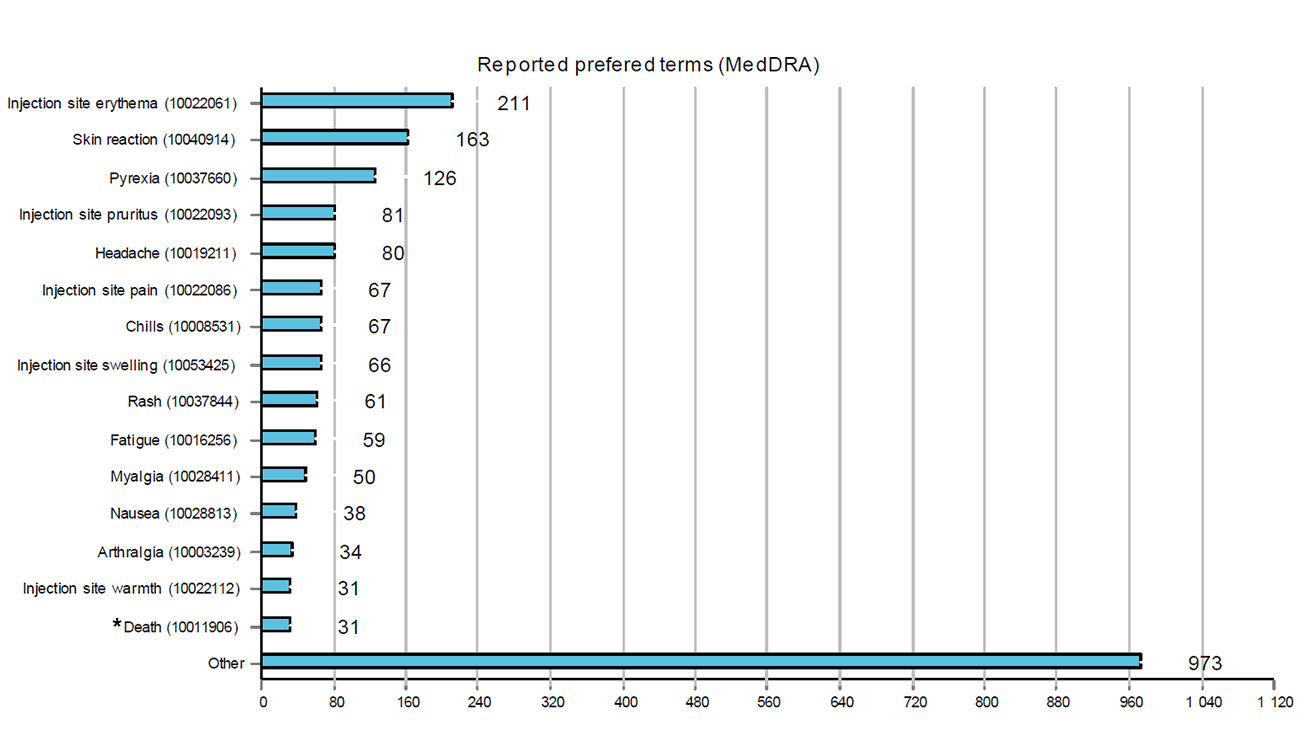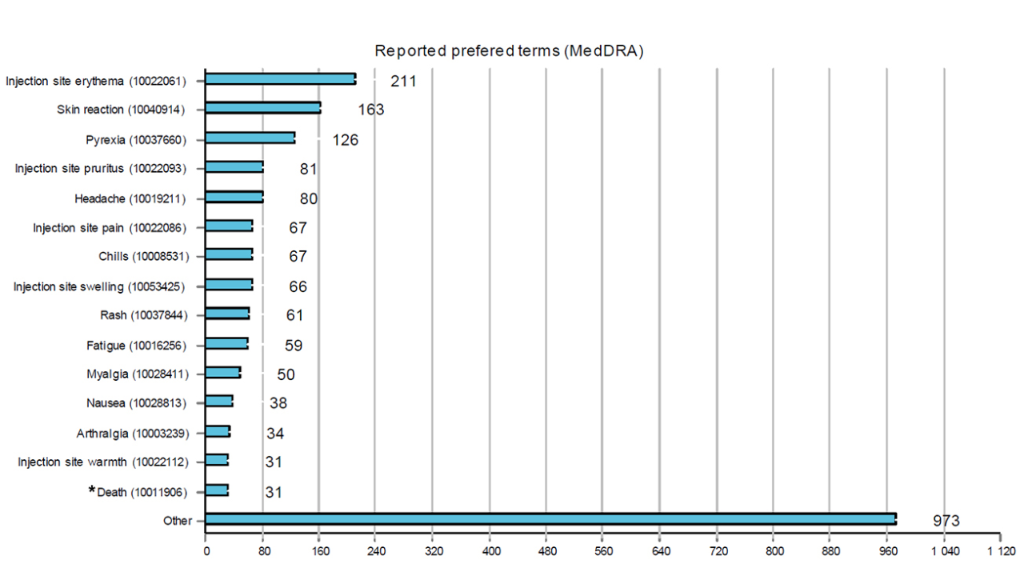As at 20 April 2021, Swissmedic, in collaboration with the regional pharmacovigilance centres, has evaluated 1,485 reports of suspected adverse drug reactions (ADR) to COVID-19 vaccinations in Switzerland. The reports corroborate the side effects profile identified during the authorisation studies and described in the medicinal product information, and do not alter the positive ratio of benefits to risks of the two mRNA vaccines used.
1485 reports of suspected adverse reactions to COVID-19 vaccines in Switzerland evaluated
22.04.2021
706 reports involve Pfizer/BioNTech's Comirnaty®, while 761 are associated with Moderna's COVID-19 vaccine. In 18 cases, the vaccine was not specified. Most of the reports were submitted by medical professionals while 145 (9.8%) came directly from those affected, i.e. the patients.
According to information from the FOPH, around 2.1 million vaccine doses have been administered in Switzerland up to and including 18 April 2021, and approximately 769,000 people have been fully vaccinated. Since there is often a delay in sending reports on adverse drug reactions to Swissmedic and it also takes time to carefully evaluate them, it is not possible to directly compare the reports shown here with the vaccinations given. Retrospectively, however, there is an approximate reporting rate of one per 1,000 doses administered.
The majority of the reports concerned women (67.9%). Men were affected in 28.7% of cases, and there were a few cases (3.4%) where no gender was specified.
The average age of those affected was 64.8 years (range 16–101), with 41.6% aged 75 or over. In the cases classified as serious (n = 537) the average age was 68.5, and for reports temporally linked to a death (n = 64) it was 82.0 years.
At 948 (63.8%) most of the reports were classified as not serious, while 537 reports (36.2%) were classified as serious. In these latter cases, the people affected were either treated in hospital or their reactions were classified as medically significant for other reasons. In most cases, however, the persons concerned were not in danger.
The majority of the reports involved more than one reaction (a total of 3,851 reactions in the 1,485 reports, equating to an average of 2.6 reactions per report). The reactions most commonly reported in the cases classified as serious were fever (80), shortness of breath (39), headaches/migraine (37), reactivation of shingles (34), shivering (28), hypersensitivity (27), anaphylactic reactions (13), vomiting (28), muscle pain (27), malaise (25) and elevated blood pressure (25). Since a single report generally involves more than one reaction, reactions such as fever or headache are reported in cases that are classified as serious overall as well as in non-serious cases.
61 cases of herpes zoster (shingles) were reported. Herpes zoster is caused by a reactivation of varicella zoster viruses (VZV). The primary infection with VZV leads to chickenpox. Risk factors for herpes zoster include immunosuppressive treatments, diabetes mellitus, female gender, psychological stress and mechanical trauma. The incidence of herpes zoster increases with age, ranging from 3 in 1,000 among 40–50-year-olds to 10 in 1,000 among the over-80s. The average age of those affected in the reported cases was 72. Given the frequency of herpes zoster in the age groups that are predominantly vaccinated, purely from the statistical standpoint one would expect a certain number of herpes zoster cases to occur in a temporal relationship with a COVID-19 vaccination. The possibility of a causal connection between the vaccinations and the onset of herpes zoster is currently under investigation.
Figures 1 and 2 respectively show the most frequently reported reactions associated with Comirnaty® and Moderna's COVID-19 vaccine. The most common reactions overall were injection site reactions (redness, itching, pain and swelling), fever, headaches, muscle pain, shivering and fatigue. Cases with these reactions accounted for more than half of the reports (54%).
Reports of local reactions at the injection site, including those with delayed onset, account for a much larger proportion of reports relating to the COVID-19 vaccine from Moderna compared to the reports for Comirnaty®, for which general reactions are more likely to be reported.
In 64 serious cases, the people concerned died at differing intervals after receiving the vaccine. Their average age was 82, and the majority of them had serious pre-existing conditions. These cases were analysed with particular care. As far as is known at present, death was caused by conditions such as infections, cardiovascular events or diseases of the lungs and airways that occurred independently of the vaccinations. Despite a chronological correlation, there is no concrete evidence to suggest that the vaccination was the cause of death. The drug regulatory authorities of other countries and the WHO reached similar conclusions when they evaluated deaths with a temporal link to the COVID-19 vaccines authorised in Switzerland.
The reports of adverse reactions received and analysed to date do not alter the positive benefit-risk profile of the COVID-19 vaccines used in Switzerland. In evaluating the safety aspects of the COVID-19 vaccines, Swissmedic also regularly consults other international drug regulatory agencies.
The reports now provide us with a clearer picture of the vaccines’ safety in daily use. This largely confirms their known side effects profile. Known side effects of COVID-19 vaccines are listed in the continually updated medicinal product information texts published on www.swissmedicinfo.ch.





